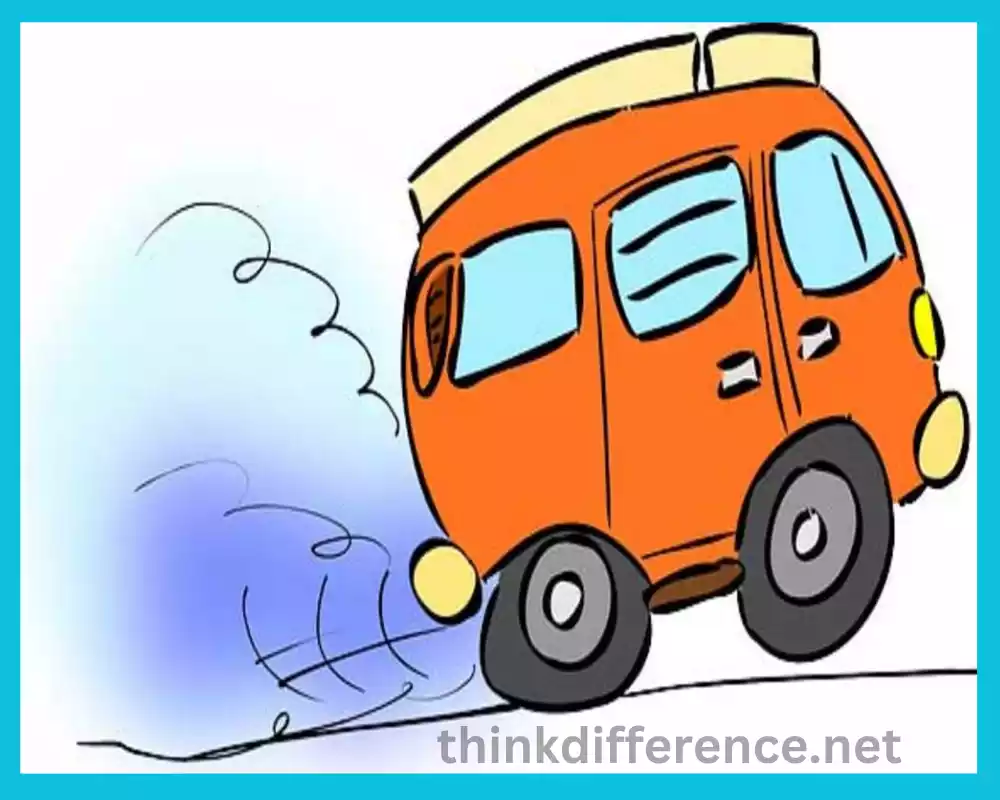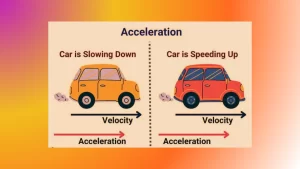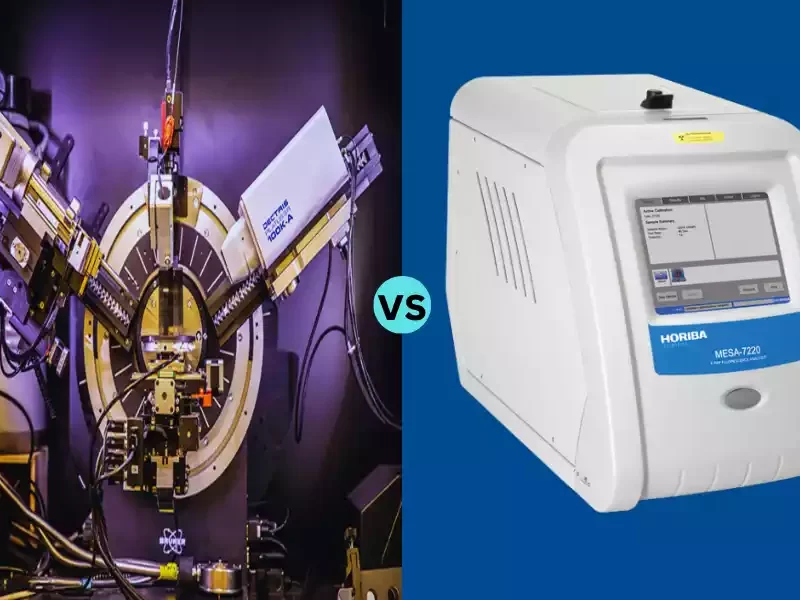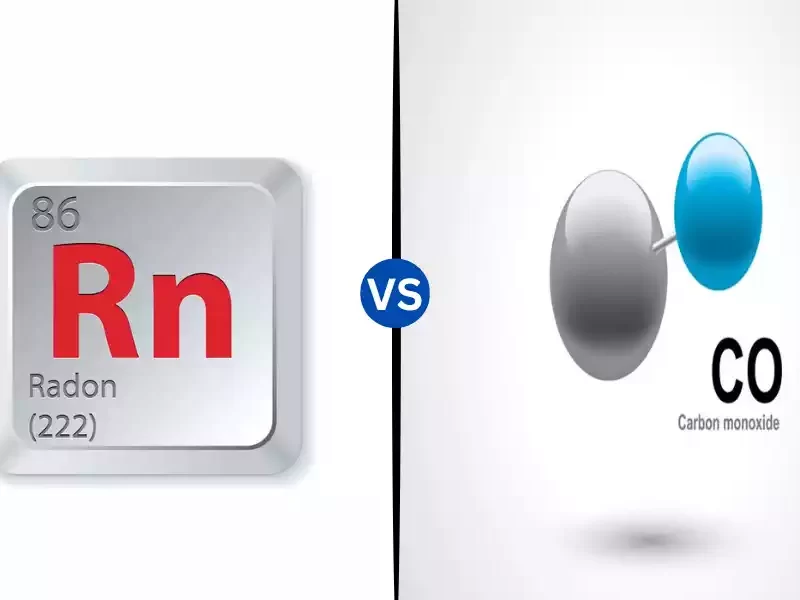Acceleration and Retardation in physics are fundamental concepts used to describe changes in motion of objects, with acceleration referring to increased velocity while retardation refers to decreased momentum. Understanding these processes helps plan effective courses of action. In this article we’ll investigate their differences, definitions and applications.
Definition of Acceleration
Acceleration can be measured using its speed or direction of travel. Acceleration happens whenever something speeds up, slows down or changes direction – vector quantities with both numerical (numerical value) and directional components – such as meters/second squared for SI purposes or when one object speeds up faster or changes its course in some other manner than expected (directional value). To calculate acceleration (a), divide change of speed Dv by time interval during which event occurred Dt (divide change in speed Dv/Dt).
Definition of Retardation
Retardation, also referred to as deceleration or negative acceleration, refers to any rate of decrease in velocity over time or in simpler terms. Retardation is either slowing of an object’s velocity or switching its direction of travel. Retardation, like acceleration, is a vector quantity with both magnitude and directions.
The SI unit for retardation equals that for acceleration: meters per second squared. Mathematically, retardation (r) can be calculated by dividing negative velocity change (Dv) by its time interval occurrence (Dt; thus r=-Dv/Dt. Negative sign indicates decreasing velocity; term “retardation”, although typically used in scientific settings to refer to negative acceleration, is now more often called deceleration”.
Importance of Understanding Acceleration and Retardation in Physics
Understanding acceleration and retardation is crucial in the field of physics for several reasons:
- Describing motion: Acceleration and retardation provide a quantitative description of how objects change their velocity over time. By understanding these concepts, physicists can accurately analyze and describe the motion of objects, including their speed, direction, and changes in velocity.
- Laws of motion: Acceleration plays a fundamental role in Newton’s laws of motion. The second law states that the acceleration of an object is directly proportional to the net force acting on it and inversely proportional to its mass (F = ma). By comprehending acceleration, physicists can apply these laws to analyze and predict the behavior of objects under the influence of forces.
- Kinematics: Acceleration and retardation are essential components of kinematics, which is the study of motion without considering the forces involved. Kinematic equations involving acceleration allow physicists to calculate various quantities, such as displacement, velocity, and time, and establish relationships between them.
- Projectile motion: When objects are launched into the air or follow a curved trajectory, understanding acceleration is critical. The acceleration due to gravity affects the vertical motion of projectiles, causing them to accelerate downward and leading to interesting parabolic paths. Accurate calculations and predictions of projectile motion require a solid grasp of acceleration concepts.
- Mechanics and engineering: In fields such as mechanics and engineering, the understanding of acceleration and retardation is vital for designing and analyzing moving systems. This knowledge helps in optimizing the performance of vehicles, machinery, and other mechanical systems by considering factors such as acceleration limits, braking distances, and the effects of inertia.
- Astrophysics and space exploration: In the study of celestial objects and space exploration, acceleration is crucial for understanding phenomena like orbital motion, gravitational interactions, and the behavior of spacecraft. By comprehending acceleration, scientists can accurately model and predict the motions of planets, satellites, and other celestial bodies.
- Safety and transportation: Understanding acceleration and retardation is vital for ensuring safety in various transportation modes. It allows engineers to design effective braking systems, analyze the effects of acceleration on passengers, and calculate stopping distances to prevent accidents.
A solid understanding of acceleration and retardation is foundational in physics, enabling scientists and engineers to comprehend and describe the motion of objects, apply fundamental laws, solve complex problems, and develop innovative technologies in numerous fields.
Understanding Acceleration
Understanding acceleration is fundamental in the study of physics and motion. Acceleration measures the rate at which velocity changes over time and measures whether an object’s speed changes either by increasing or decreasing over time.

The standard formula for Acceleration is given by:
Acceleration (a) = Change in Velocity (Δv) / Change in Time (Δt)
Acceleration is a vector quantity, meaning it has both magnitude and direction. Acceleration refers to any change in velocity. Its magnitude refers to how much this velocity changes, while direction refers to whether an object accelerates in line or opposite to its velocity (positive/negative acceleration).
Key points to understand about acceleration:
- Relationship with Velocity: Acceleration and velocity are related but distinct concepts. Acceleration refers to the rate at which velocity changes over time. Acceleration is often caused by forces acting on an object.
- Positive and Negative Acceleration: Positive acceleration indicates speed while negative acceleration indicates slowdown. Negative acceleration occurs when the force acting on an object opposes its direction of motion.
- Instantaneous and Average Acceleration: Acceleration may be measured instantaneously or over an extended time interval (average acceleration). Instantaneous acceleration describes the acceleration at a particular moment, while average acceleration represents the overall change in velocity over a given time interval.
- Units of Acceleration: Acceleration in the metric system is generally measured in meters per second squared. It represents the change in velocity (in meters per second) per unit of time (in seconds).
- Factors Affecting Acceleration: Factors such as force, mass and friction along with external influences like electromagnetic or gravity can all have an effect on acceleration. These factors determine the rate at which an object’s velocity changes.
- Graphical Representation: Acceleration can be represented graphically on a velocity-time graph. The slope of the graph represents the acceleration. A steeper slope indicates a greater acceleration, while a horizontal line indicates no acceleration (constant velocity).
Understanding acceleration is crucial for analyzing the motion of objects, calculating the effects of forces, predicting changes in velocity, and solving various physics problems. Understanding how objects interact and respond to external forces provides invaluable insight.
Understanding Retardation
Understanding retardation is important in the study of physics and the analysis of motion. Retardation refers specifically to negative acceleration, indicating a decrease in velocity over time. It is also commonly referred to as Deceleration.

Here are key points to understand about retardation:
- Definition: Retardation refers to the decrease in speed that an object’s motion experiences as its speed decreases. It is the opposite of acceleration, which represents the rate at which velocity increases. Retardation can occur due to the application of forces opposing the direction of motion or due to the natural effects of friction and resistance.
- Negative Acceleration: Retardation is characterized by negative acceleration. In equations and calculations, the negative sign is used to indicate deceleration. The negative acceleration value signifies that the object’s velocity is decreasing in the direction opposite to its initial velocity.
- Magnitude and Direction: Like acceleration, retardation is a vector quantity. It has both magnitude and direction. The magnitude represents the rate at which velocity decreases, while the direction indicates the opposite direction to the initial velocity.
- Units of Retardation: Retardation in the metric system of measurement is measured in meters per second squared. It represents the change in velocity (in meters per second) per unit of time (in seconds).
- Relationship with Force: Retardation is often caused by forces that act opposite to the direction of motion. When a car brakes, for example, it exerts force against its motion causing an effect known as retardation. The magnitude of the retardation depends on the strength of the opposing force.
- Graphical Representation: Similar to acceleration, retardation can be represented graphically on a velocity-time graph. In such an instance, the slope would be negative, signaling a decrease in speed over time.
- Applications: Understanding retardation is relevant in various practical situations. It is crucial for calculating stopping distances in vehicles, designing braking systems, predicting the motion of objects subjected to opposing forces, and ensuring safe deceleration in various contexts such as transportation, sports, and industrial machinery.
By comprehending retardation, we can better analyze the motion of objects and predict how their velocity changes over time. It allows us to understand the effects of opposing forces, design appropriate braking mechanisms, and ensure safe deceleration in various applications.
Differences between Acceleration and Retardation
There are several key differences between acceleration and retardation:
- Direction of motion:
- Acceleration: Acceleration refers to any change in velocity. It can be in the same direction as the initial motion (speeding up) or opposite to it (slowing down or changing direction).
- Retardation: Retardation, on the other hand, always opposes the initial motion. It acts in the opposite direction to the velocity vector, causing the object to slow down or reverse its motion.
- Sign conventions:
- Acceleration: Acceleration can have positive or negative values depending on the direction of the change in velocity. Positive acceleration represents speeding up, while negative acceleration indicates slowing down or changing direction.
- Retardation: Retardation is always considered as negative acceleration. It is associated with the slowing down of an object’s velocity, so its value is negative.
- Physical interpretation:
- Acceleration: Acceleration represents an increase in velocity, which can be due to various factors such as applied forces, gravity, or changes in direction. It signifies the rate at which an object’s speed or velocity is changing.
- Retardation: Retardation refers to a decrease in velocity, indicating that an object is slowing down. It represents the rate at which an object’s speed or velocity is decreasing.
- Mathematical representation:
- Acceleration: Acceleration is mathematically represented as a change in velocity divided by the time taken for that change. The unit for meters per second (m/s2) has been adopted here.
- Retardation: Retardation is mathematically represented as a negative change in velocity divided by the time taken for that change. It is often denoted by the symbol ‘r’ or ‘-a’ and also has units of meters per second squared (m/s²).
- Examples illustrating the differences:
- Acceleration: Examples of acceleration include a car accelerating from rest to a higher speed, a ball falling under the influence of gravity, or a cyclist pedaling faster to increase their speed.
- Retardation: Retardation occurs in many forms: cars slowing or stopping abruptly; rockets launching in an opposite direction to reduce velocity gradually decreasing speed at the conclusion of races are all examples of retardation.
While acceleration and retardation represent changes in velocity, their distinctions lie in the direction of motion, sign conventions, physical interpretations, mathematical representations, and the specific examples associated with each. Understanding these differences is crucial in accurately describing and analyzing the motion of objects in various contexts.
Similarities between Acceleration and Retardation
While acceleration and retardation are opposite concepts, there are a few similarities between them. Here are some commonalities between acceleration and retardation:
- Change in Velocity: Both acceleration and retardation involve a change in velocity. They both measure the rate at which velocity changes over time. Acceleration refers to an increase in speed while retardation means decreasing it.
- Rate of Change: Both acceleration and retardation are expressed as rates of change. They quantify how quickly the velocity of an object is changing, either increasing or decreasing.
- Units: Acceleration and retardation share the same units of measurement. Under the metric system, speed changes are measured in meters per second squared. This represents how quickly speed (in meters per seconds) has changed per unit time (one second).
- Vector Quantities: Both acceleration and retardation are vector quantities. They have both magnitude and direction. The magnitude represents the rate of change of velocity while direction indicates how this change may manifest itself (either parallel with or opposite to velocity).
- Graphical Representation: Acceleration and retardation can be graphically represented on velocity-time graphs. The slope of both graphs remains constant. A steeper slope indicates an increased rate of change whether positive (acceleration), or negative (retardation).
- Factors Affecting Change: The factors that affect acceleration and retardation are similar. Both are influenced by forces acting on an object, mass, friction, and other external factors. Strength and direction play an integral part in determining velocity changes.
While acceleration and retardation differ in terms of the direction of velocity change (increase or decrease), they share common elements in their measurement, units, graphical representation, and factors affecting their magnitude. Understanding these similarities can help in comprehending the concept of changing velocity and the principles of motion.
Applications of Acceleration and Retardation
Acceleration and deceleration have many applications across diverse fields. Here are a few examples:
- Transportation and Vehicle Dynamics:
- Acceleration: Acceleration is crucial in automotive engineering for designing vehicles with desirable acceleration characteristics. Automobiles, motorcycles and other forms of transport rely heavily on transmission oil for optimal performance. Understanding acceleration helps engineers optimize engine power, torque, and gear ratios for efficient acceleration and smooth merging in traffic.
- Retardation: Retardation is essential for vehicle safety and control. It is utilized in braking systems to slow down or stop vehicles. Engineers design braking systems that can provide sufficient retardation to ensure safe stopping distances and control over a vehicle’s speed.
- Sports and Athletics:
- Acceleration: Acceleration is of great importance in sports and athletics. Acceleration is key for athletes looking to maximize their performance – be it sprinting, cycling or swimming. Understanding acceleration helps trainers and athletes develop training programs to improve their initial burst of speed.
- Retardation: Sports such as tennis, basketball and soccer require athletes to decelerate quickly so as to avoid collisions, quickly change directions or stop abruptly. When deceleration becomes necessary it must happen quickly for safety purposes – or collisions could ensue!
- Robotics and Automation:
- Acceleration: Acceleration is a critical factor in robotics and automation. Understanding acceleration helps in designing robots that can move swiftly and accurately in manufacturing processes, robotic assembly lines, and autonomous vehicles. Acceleration control enables robots to perform precise movements and carry out tasks efficiently.
- Retardation: Retardation is significant in robotic systems for controlled deceleration, stopping, and safe interaction with humans. It is vital in designing robots that can slow down or halt their movements smoothly to avoid accidents or collisions.
- Physics and Motion Analysis:
- Acceleration: Acceleration is a fundamental concept in physics. Acceleration is an integral component in understanding motion, force and energy. Scientists rely on acceleration as an analytical tool when studying object behavior when exposed to different forces.
- Retardation: Negative acceleration refers to objects moving in an anticlockwise direction. It is relevant in physics experiments and simulations where objects slow down or reverse their motion due to resistive forces, friction, or external influences.
- Engineering and Design:
- Acceleration: Understanding acceleration is crucial in engineering design processes, especially in fields such as aerospace, structural engineering, and fluid dynamics. It helps engineers analyze the effects of acceleration on structures, materials, and systems to ensure they can withstand the forces experienced during acceleration.
- Retardation: Retardation is significant in engineering design when it comes to factors like shock absorption, safety mechanisms, and impact resistance. It is essential in designing systems that can withstand deceleration forces during sudden stops or in situations where objects collide or experience rapid changes in motion.
These applications highlight the practical significance of acceleration and retardation in various domains, ranging from transportation and sports to robotics, physics, and engineering. The understanding and control of acceleration and retardation enable advancements in technology, safety, performance optimization, and the overall understanding of motion.
Examples of Acceleration and Retardation in Real Life
Real world scenarios provide plenty of examples of acceleration and deceleration, here are just a few to illustrate them:
Acceleration:
- Car Acceleration: Car acceleration from standing position to faster speed; for example when merging onto highway or passing another vehicle.
- Sprinter Start: A sprinter accelerating explosively from the starting blocks to reach maximum speed in a short distance.
- Elevator Acceleration: As an elevator moves upward or downward, passengers will feel an acceleration sensation as it propels forward or back. They could find themselves either being propelled in their seats or lifted from the floor entirely.
- Rocket Launch: Rockets generate powerful acceleration as they lift off the ground, rapidly gaining speed and escaping Earth’s gravitational pull.
- Airplane Takeoff: During takeoff, airplanes accelerate along the runway, gradually increasing speed until they achieve the necessary velocity to lift off into the air.
Retardation:
- Car Braking: Brakes should only be applied when the vehicle slows or stops for any reason; such as stopping at a red traffic light or dodging an obstacle.
- Landing Airplanes: As the airplane approaches for landing, its pilot will reduce throttle to slow its descent. As its speed decreases and it comes close to landing on its runway, touch-down will occur gradually and it should come safely down onto it.
- Bicycle Braking: When a cyclist squeezes the brakes to slow down or stop the bicycle, reducing speed and bringing it to a halt.
- Roller Coaster Braking: Roller coasters incorporate deceleration sections using brakes to reduce speed safely before entering a station or changing direction.
- Athlete’s Stop: Athletes in various sports, such as runners or soccer players, decelerate when they need to stop abruptly, change direction, or avoid colliding with others.
These examples demonstrate how acceleration and retardation are encountered in everyday situations, whether it’s in the context of vehicles, sports, transportation, or even human movements. Understanding and recognizing these instances of acceleration and retardation helps to comprehend the physical principles behind motion and the forces involved.
Factors Affecting Acceleration and Retardation

Different factors can contribute to how quickly velocity shifts.
Here are a few that might influence Acceleration or Retardation:
- Force Applied: The magnitude and direction of the force applied to an object directly affect its acceleration or retardation. A greater force applied in the direction of motion leads to a higher acceleration, while a force in the opposite direction or against the motion results in retardation.
- Mass of the Object: The mass of an object influences its acceleration and retardation. Newton’s second Law of Motion (F = Ma) states that applying a force to something with greater mass will cause it to accelerate at less of an angle than something lighter and massier. Similarly, a larger mass will lead to a greater retardation for a given opposing force.
- Friction and Resistive Forces: Friction and other resistive forces, such as air resistance or fluid resistance, can affect acceleration and retardation. These forces act opposite to the direction of motion, causing a decrease in acceleration or an increase in retardation. The presence of friction or resistive forces can significantly impact the overall motion of an object.
- Inclined Surfaces: When an object moves on an inclined surface, the angle of the incline affects its acceleration and retardation. As slope increases, so will its component force acting upon motion direction; leading to faster acceleration or deceleration of vehicle movement.
- Surface Conditions: The nature and condition of the surface on which an object is moving can influence its acceleration and retardation. For example, on a rough surface with high friction, the object’s motion may be hindered, resulting in lower acceleration or higher retardation compared to a smooth surface with less friction.
- External Forces: Other external forces, such as gravitational forces or electromagnetic forces, can impact acceleration and retardation. For instance, the acceleration due to gravity affects the motion of objects falling freely or thrown vertically upward.
- Initial Velocity: An item’s initial velocity also plays a critical role in its acceleration or deceleration; objects at rest require additional time or force to achieve a change in velocity than objects that are moving, which results in them taking longer for such changes to take effect.
It is important to consider these factors when analyzing or predicting the acceleration and retardation of objects. By understanding the interplay between forces, mass, surface conditions, and other influencing factors, one can better comprehend and quantify the changes in velocity that occur during acceleration and retardation.
Safety Considerations in Acceleration and Retardation
Safety should always come first when considering acceleration or retardation. Keep these points in mind for optimal acceleration or retardation:
- Vehicles and Transportation:
- Acceleration: When accelerating in vehicles, it is essential to ensure that the acceleration is gradual and controlled, especially in situations with pedestrians, cyclists, or other vehicles nearby. Sudden or excessive acceleration can lead to loss of control, accidents, or collisions.
- Retardation: In the case of deceleration or braking, it is important to maintain a safe distance from the vehicle ahead to allow for sufficient stopping distance. Abrupt or harsh braking can cause skidding, loss of control, or rear-end collisions. Proper maintenance of braking systems is crucial for effective retardation.
- Sports and Athletics:
- Acceleration: Athletes should engage in proper warm-up exercises and training programs to gradually increase acceleration abilities and reduce the risk of muscle strains or injuries. Explosive acceleration without proper preparation can lead to pulled muscles or other physical problems.
- Retardation: Athletes should practice techniques for safe deceleration and stopping to prevent sudden stops that can strain joints, muscles, or ligaments. Learning proper deceleration strategies can help minimize the risk of injury during sudden direction changes or stops.
- Industrial Machinery and Equipment:
- Acceleration: Industrial equipment or machinery with acceleration capabilities should be designed, operated, and maintained in a way that ensures the safety of operators and workers. Adequate training, safety protocols, and protective measures should be in place to prevent accidents during acceleration processes.
- Retardation: For equipment or machinery with deceleration capabilities, safety measures should be implemented to ensure controlled and safe stopping or slowing down. Emergency stop mechanisms, proper signage, and operator training are crucial to prevent accidents during deceleration or shutdown procedures.
- Public Transportation:
- Acceleration: Public transportation systems, such as buses or trains, should have controlled acceleration to ensure the comfort and safety of passengers. Sudden or jerky acceleration can lead to falls, injuries, or passenger discomfort.
- Retardation: Proper deceleration and braking systems should be in place in public transportation vehicles to allow for smooth stops and minimize the risk of collisions, especially when approaching stations or busy areas.
- Pedestrian Safety:
- Acceleration: Pedestrian areas, crosswalks, and intersections should be designed to consider the acceleration capabilities of vehicles, ensuring a safe environment for pedestrians. Clear signage, traffic lights, and designated crossing zones help pedestrians anticipate and respond to accelerating vehicles.
- Retardation: Pedestrians should be aware of vehicles’ potential deceleration or braking actions and exercise caution when crossing roads or interacting with vehicles. Adhering to traffic signals, using designated crosswalks, and maintaining visual contact with drivers can enhance pedestrian safety during deceleration or stops.
- Amusement Rides:
- Acceleration and Retardation: Amusement rides with acceleration or deceleration elements, such as roller coasters, should comply with stringent safety regulations. Proper restraint systems, adequate braking mechanisms, and regular maintenance are crucial to ensure the safety of riders during acceleration and deceleration phases.
These safety considerations emphasize the importance of controlled and well-managed acceleration and retardation in various domains. Assuring the wellbeing and protection of all individuals – car occupants, athletes, workers or pedestrians alike – requires appropriate training, adherence to safety protocols and implementation of safeguards when accelerating or decelerating.
Conclusion
Acceleration and Retardation are fundamental concepts that shape motion in the world around us. From the laws of physics to engineering, transportation, sports, and space exploration, these forces play a crucial role in various aspects of our lives. Understanding the principles of acceleration and retardation helps us harness their power responsibly and safely, driving progress and innovation in numerous fields.



